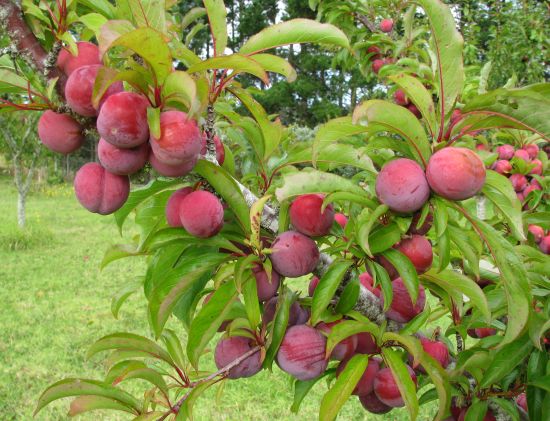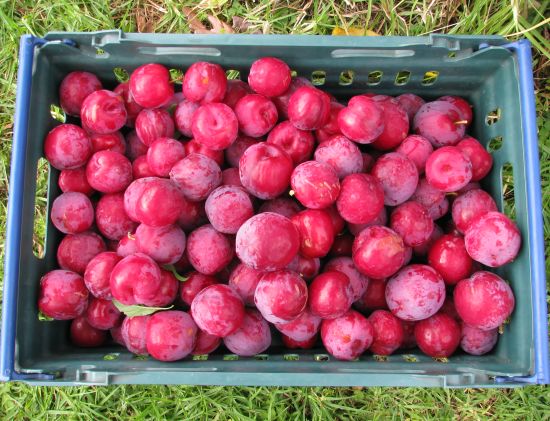
A large rambling plum tree at the bottom of the garden which you climbed and made into a space ship is the stuff of childhood memories.
These days with our smaller backyards you can still evoke those memories and enjoy growing plums thanks to modern rootstocks and careful pruning.

Most plums are root-grafted, and while some plums are grafted onto peach rootstock, the ones grafted onto plum rootstock will do better in warmer climates. It’s best to buy a plum tree from a supplier in your region as there are varieties that do better in warmer climates and those which do better in cooler ones. You can grow good plum trees from cuttings taken in late winter. They will be much bigger trees however.
Usually you’ll need two varieties for fertilisation, since most plums are self-sterile. But plums can be pollinated if another tree is grown within 2 kilometres away or as far as the bees will fly. You can opt for a dual-purpose cultivar (two trees grafted onto the one trunk so they fertilise each other). And there are self-fertile varieties as well so a single tree can be planted on its own.
Spring planting is fine as long as the tree is completely dormant. Cut the wood back by 25 percent when you plant.
Plums are one of the earliest crops to flower in the fruit garden. While the trees themselves are often extremely hardy, the flowers can easily be killed by frosts, so it’s essential to position trees out of frost pockets or windy sites. A sheltered, sunny spot will produce the best results.
The time for plum tree pruning depends on the maturity and type of plum tree. Young plums are generally pruned in early spring, before bud break, in order to avoid infection by silver leaf disease. Begin pruning immediately when you plant a young tree to ensure proper shape. Established fruit tree plums are best pruned from mid-summer on after harvest.
Plum trees are best pruned in a vase format to get a short trunk with three or four major branches to come off the trunk at a 45-degree angle. This allows plenty of light and air into the tree and will make fruit retrieval easy. Make sure you use sterilised and sharp pruning shears when you trim.
Once every 3 years give your plum tree a cleanup spray of lime sulphur. Apply as per directions on the packet.

Birds are one of the main problems with plum trees. You can hang old CDs in the tree and that may frighten them off, but really you just have to be quick and get in first. The season is not long so check your tree every day.
Great suppliers of plum and other fruit trees are Sarah Frater at Edible Garden in Palmerston North who offers the Koanga Institute range of fruit trees as well as others, and Benji and Laura Woodman at Forgotten Fruits in Kaiwaka. Both freight fruit trees to your front door.
Here are some reliable varieties:
| Dan’s Early | Early variety | Partially self-fertile | Pollinator: Duff’s Early Jewel |
| Billington | Early variety | Self-fertile | |
| Tamaki Special | Early variety | Self-sterile | Pollinator: Duff’s Early Jewel |
| Wilson’s Early | Early variety | Self-sterile | Pollinators: Billington, Black Doris, Omega, Santa Rosa |
| Fortune | Mid-season | Self-sterile | Pollinator: Santa Rosa |
| Luisa | Mid-season | Self-fertile | |
| Burbank | Mid-season | Self-fertile | |
| Satsuma | Mid-season | Self-sterile | Pollinator: Santa Rosa |
| Scarletina | Mid-season | Self-fertile | |
| Santa Rosa | Mid-season | Partially self-fertile | Pollinators: Omega and Duff’s Early Jewel |
| George Wilson (Omega) | Late variety | Partially self-fertile | Pollinator: Billington |
| Kereru Gold | Late variety | Self-fertile | |
| Queen Rosa | Late variety | Partially self-fertile | Pollinator: Duff’s Early Jewel |
Website designed by www.thecornerstorecollective.com
Developed by Richard Hpa